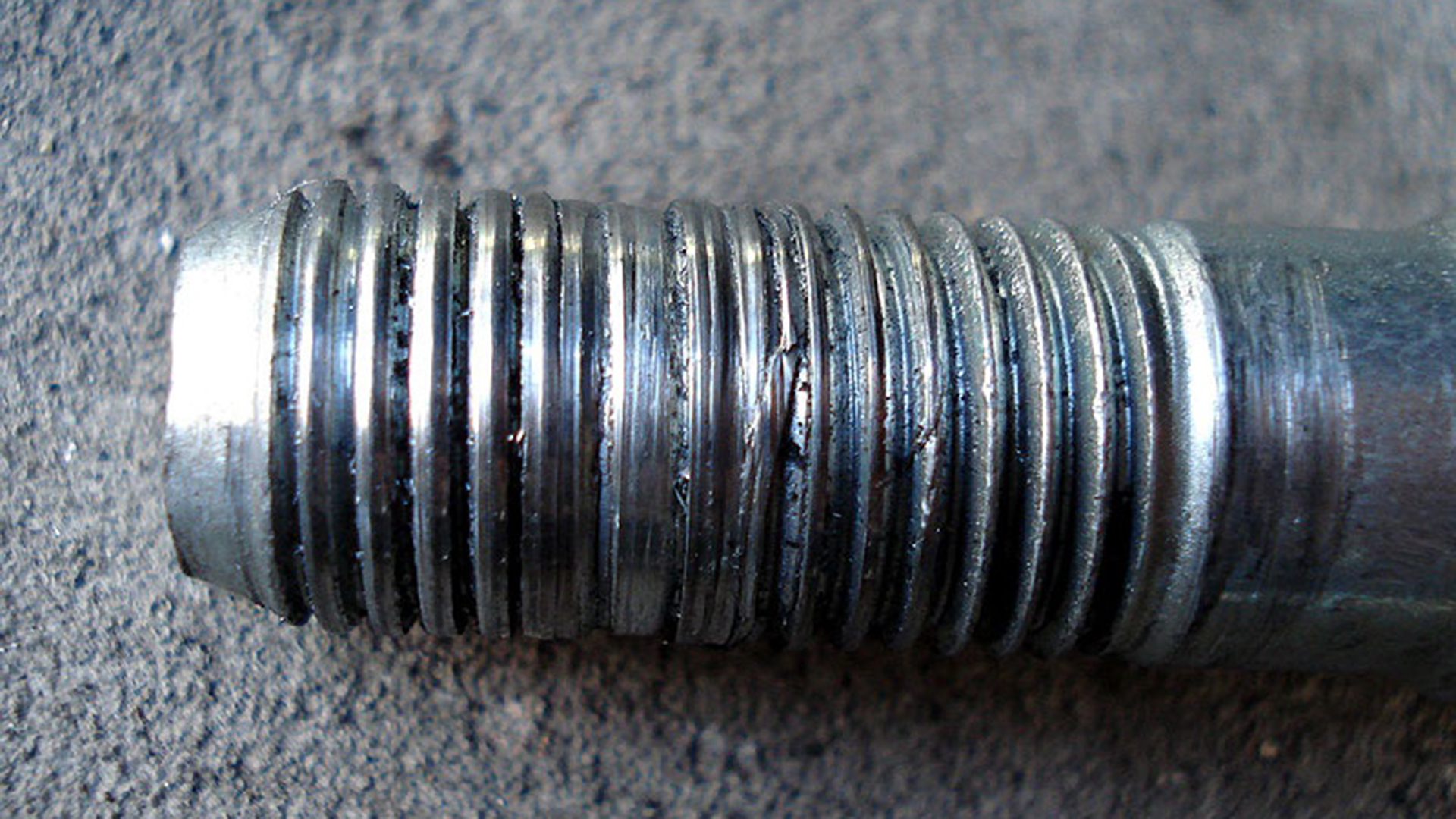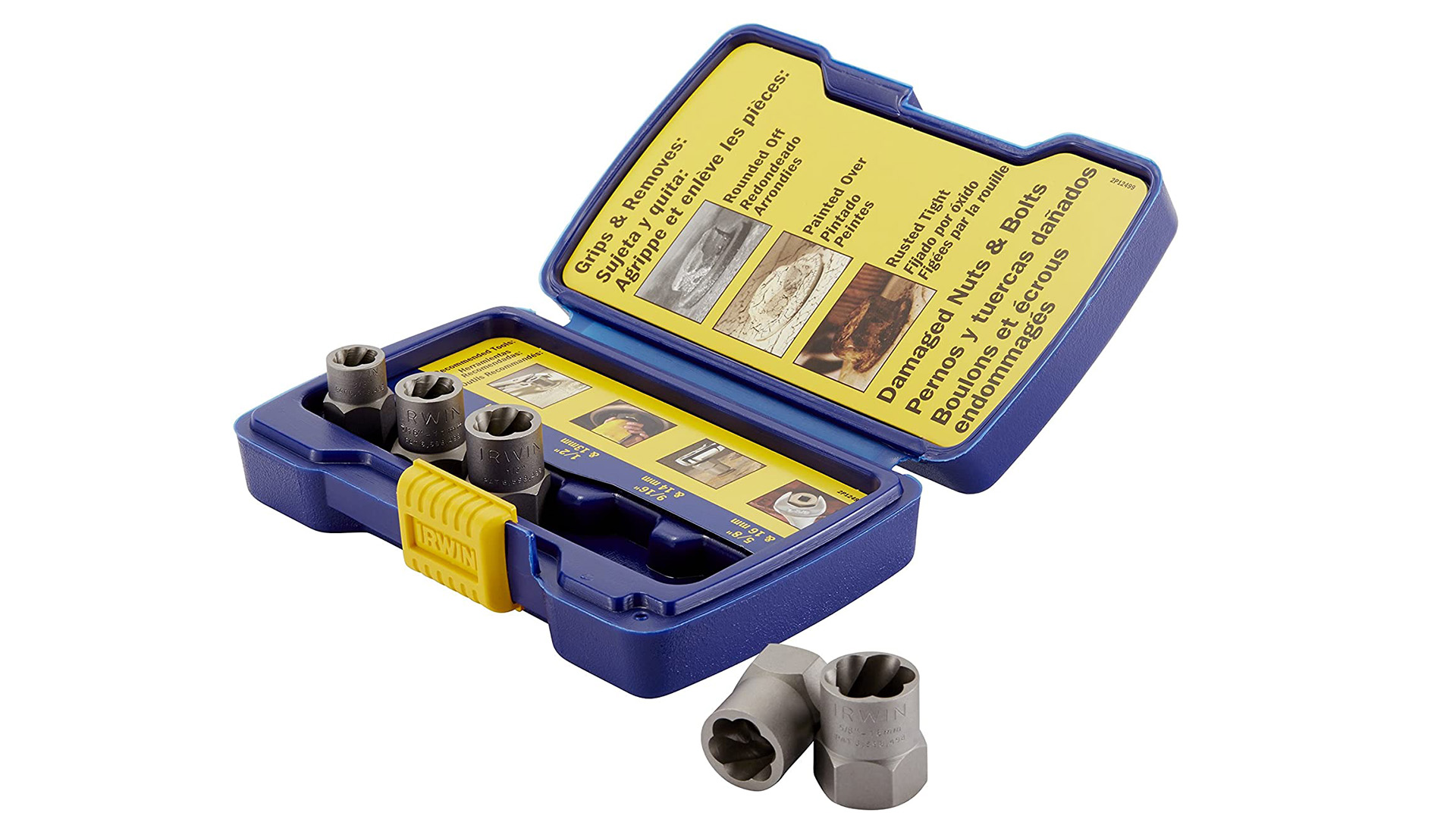

We may earn revenue from the products available on this page and participate in affiliate programs. Learn more ›
A stripped bolt is kind of a metaphor for a lot of wrenching projects out there. It’s supposed to work one way as part of a simple task, but instead, it turns into an hours-long nightmare that leaves you randomly pacing to the end of your driveway in fury. Got a round head on your bolt? Machined perfectly round like it was done on a lathe? Don’t worry, you have options.
Defeating a stripped bolt provides the most important lesson any would-be mechanic can carry with them: be patient. Patience is the key to completing any car project, and breaking a frozen bolt is one of the ultimate tests.
Luckily, the age-old issue also has age-old solutions. With some determination, a lot of penetrating fluid, the possibility of a blowtorch, and the right tools, there is no bolt you cannot beat.

Everything You Might Need To Remove a Stripped Bolt
Removing stripped bolts is all about experience. If you’ve never removed one, you may feel stuck, along with your fastener. If you’ve done it plenty of times, you know there’s almost always a way to get that thing loose. If everything goes relatively smoothly, you could be all set within a few minutes. If this removal is not straightforward, or if you need to apply a lot of heat or torque, you may spend an entire excruciating day attempting to remove the offending item.
The following is a full list of everything you could use to remove a stripped bolt—you certainly won’t need to try everything below, so read the full explanations further down to get a sense of what might work best for your situation.
Safety First
Tools and Parts
- PB Blaster or other penetrating fluid
- Locking pliers
- Normal socket set
- Extraction socket set
- Blowtorch
- Bolt extractor kit
- Dremel or similar cutting tool
- Flathead screwdriver
- Drill and drill bits
How To Remove a Stripped Bolt
We’ve tried to organize these methods in order of things you’d want to try before attempting the next step. See what works for you, and good luck!
Penetrating Fluid
Penetrating fluid like PB Blaster is designed to break down rust or other grime that locks a nut or bolt in place. Spraying the rusted areas with penetrating fluid and allowing it to soak could potentially break up the bonded areas and lubricate the bolt. This is the most hopeful method. You just let it sit for a while and when you come back, the bolt could just come right out. It usually doesn’t work that way, but it’s possible.
Screw It In To Screw It Out
If you were able to move the bolt even a slight amount before the bolt started to strip, try screwing it back in, then screwing it back out. Even if you couldnt move it a little bit, sometimes this does the trick, especially with an impact. Try to repeat a few times, it could break the bolt all the way free. More penetrating fluid is your friend.

Locking Pliers
Any locking pliers like Vise-Grips are a great option that everybody should have in their garages. If you can apply enough pressure to the bolt, the teeth might be able to provide enough grip to turn the bolt. There are several styles of locking pliers, so look around the hardware store or online to see which may be best for your situation.
Extraction Socket Set
Not everybody will have this, but there are sockets specifically designed to have more grip on stripped bolts called extraction sockets. It might work, it might not. Sometimes it helps to hammer these on with a brass hammer of stiff mallet. Using a regular hammer could crack or shatter the socket, so try to avoid that. Use eye protection either way.
Smaller Socket or Wrench
In some cases, the bolt will be so rounded that you can fit a slightly smaller wrench or socket on it with the help of a hammer. If it’s hammered on, it should have more grip, and hopefully, the bolt breaks loose. Again, try to use a hammer that’s a softer material than the socket for this. Once a socket is hammered onto a bolt head, it may not want to come off once the bolt is extracted. Keep that in mind before taking a blunt instrument to your socket set.
Heat Therapy
Using a blowtorch—finally, fire!—to apply heat to the bolt. The expansion and contraction of the metal could break the bolt free and allow it to turn. Make sure there’s nothing flammable on the bolt, like WD-40 or a similar solvent, before you do this. At the very least, leave such substances a long time to evaporate before attempting any kind of blowtorching. It’s best to apply heat to the threads and the area around them. Heating up just the head may not be effective.
Hammer Therapy
If the goal is to break the bond between the rust and the bolt, a bit of shock force to the bolt might do the trick. Start with light taps and use intentional movements. You could make it worse by ruining the threads if you’re not careful. Generally, the sharper the jolt, the better.
Bolt Extractor Kit
A variety of manufacturers offer bolt extraction kits specifically designed for this frustrating situation. Most include teethed cone-like tips that dig into the metal and grab it for better grip. You should drill a hole in the head of the shaft of the bolt to accept the extractor before you do this, or you’ll have a hard time.
Cut a Slit
Using a Dremel tool or some other type of cutter or grinder, cut a slit into the head of the bolt. Then, using a flathead screwdriver or something comparable that will fit into the slit, try to use that leverage to break the bolt free. Sometimes it’s best to get a vise grip or a similar tool on the handle for more leverage. Also, make sure you make the slit deep enough so that doesn’t strip, too.
Drill It Out
In the worst-case scenario, you have to resort to drilling the bolt out. Only do this if you are completely comfortable handling your power tools and have the correct bits for the job. Take your time, start with a small bit, and slowly expand the hole until the bolt loosens or is broken apart. This will take a long time and you may ruin a few bits in the process. Be willing to part with them. Likewise, a corded drill will make this process easier as opposed to cordless tools.
Weld On a New Bolt Head
This is really doing a lot, and you have to have a welder, but we wanted to include it as a possible option. In extreme cases, you can weld an unused squared-off bolt head—or a nut—onto the old bolt. This can often be the trick.
It’s important to do the right prep. Make sure the bolt head/remnants are as clean as possible. Heating the entire thing with a blowtorch before wiping it down with a rag will be your best bet. The heat will help with weld adhesion, too. Make sure there are plenty of tacks on that buddy and then send it.